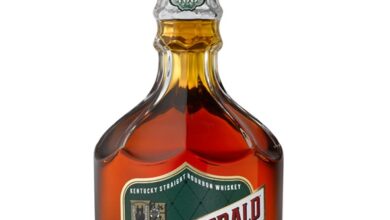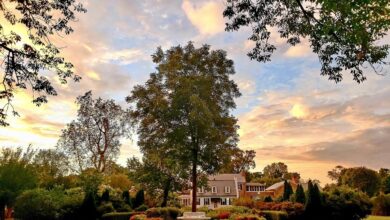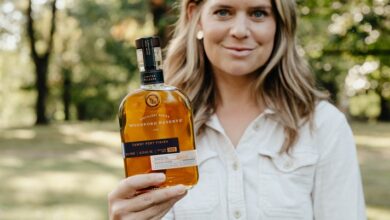Buffalo Trace’s Experimental Stock Reaches 5,000 Barrels
In the late 1800s, bourbon legend Colonel E. H. Taylor, Jr. was the first to incorporate the use of steam power and temperature controlled warehouses to age bourbon whiskey at the distillery known today as Buffalo Trace. Modern bourbon legend Elmer T. Lee introduced the world to the first very single barrel bourbon in 1984 with Blanton’s, and soon thereafter Buffalo Trace Distillery began more whiskey experiments using unique mash bills, types of wood, barrel toasts, and more. A newly hired Distillery Supervisor named Harlen Wheatley helped with some of the early experiments back in 1995, including bourbon not aged in traditional American White Oak, but French Oak. He never dreamed where this might lead.
Two decades later, Wheatley, now Master Distiller, stands at the helm of more than 5,000 experimental whiskey barrels aging at Buffalo Trace Distillery, the largest number of experimental barrels ever held in inventory at this National Historic Landmark Distillery.
Some early experiments focused on aging whiskey in used wine barrels, giving the bourbons chardonnay or zinfandel finishes. It sounds ho-hum now, but in 2007 when these were released, they were considering cutting edge.
Through the years, the experiments evolved in complexity. There have been experiments using non-traditional grains, (rice and oats), various fill proofs, barrels made from woods around the world, and even from forests in the United States not considered traditional barrel producing states. In some of the experiments Buffalo Trace’s own warehouses were the control factors, playing with barrels put up on the same day on different floors and left alone for years, to see how they might taste different. Or how a concrete floor warehouse and a wooden floor warehouse affect the taste of a barrel of bourbon, which one is better? All of these questions were asked and answered over the last 20 years, and Buffalo Trace sits on a wealth of information which it in turn uses to perfect the taste of its longstanding brands like its flagship Buffalo Trace, Eagle Rare, Blanton’s, Stagg, Weller Bourbons and more. Not to mention new bourbons, like E.H. Taylor Cured Oak and the Single Oak Project, always on the quest to discover the perfect bourbon.
“Today, our experiments are more focused within the confines of bourbon whiskey,” said Harlen Wheatley, master distiller. “We have hundreds of potential future experiments on our list and discuss regularly with the experimental team to prioritize the most interesting ideas and the experiments that deliver the most useful information.”
But not all experiments are successes. An early “failed” experiment was with aging bourbon in small barrels, of 5, 10 and 15 gallon barrels vs. the standard 53 gallon. Despite the six years of aging, the bourbon never reached its full potential, and in 2012 the experiment was deemed a failure but bottled up for future research by the distillery team.
There have been other failed experiments along the way, bourbon made with barley, bourbon aged in barrels made with sour wood, and the most recent failure, a 26 year old bourbon barrel that was just past its prime. All of these are bottled up and stored in the archives.
“It’s important to learn from your mistakes too,” noted Wheatley. “We learn as much from our failures as our successes, sometimes even more so from the failures, so that’s why we want to keep a record of them so we have them for future research.”




I bet they got some hidden jewels in those experimental batches especially with the french oak barrels. I think its awesome that they’ve not only experimented with traditional things like mash bills percentages.